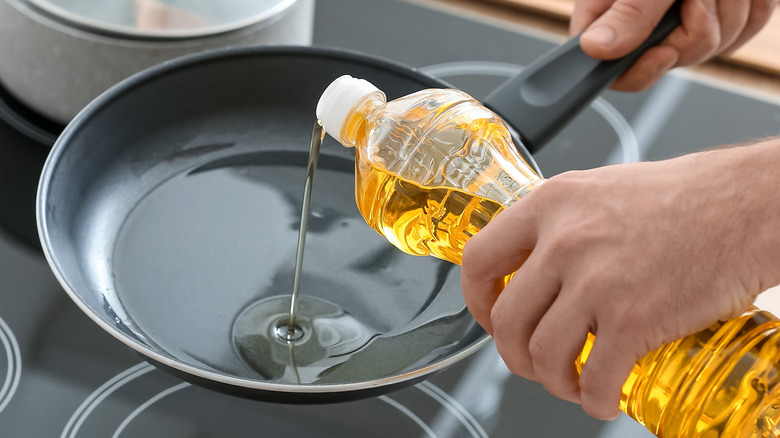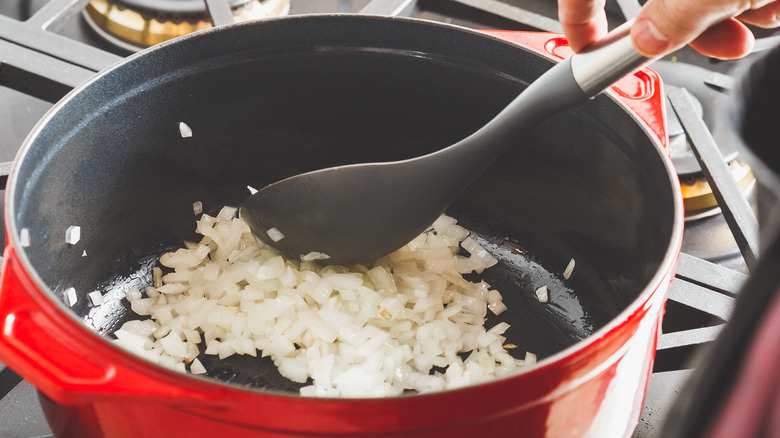What Does An Oil's Smoke Point Actually Mean?
Countless recipes, from seared meats and sautéed vegetables to savory French fries and sweet oven-baked treats, call for different types of cooking oils. Some of the most common oils used to prepare and garnish various dishes include olive, avocado, grapeseed, canola, sesame, coconut, and sunflower, just to name a few. These edible oils, which can add flavor and boost the health properties of a meal, are traditionally made by grinding, heating, pressing, and refining the seeds or nuts of a plant until their natural oils are extracted, per Made How.
However, it's important to understand that oils are not always a one-size-fits-all culinary product. Folks who usually reach for the same bottle of oil, regardless of the type of dish they're whipping up, should know that choosing the right oil for the job is important. That's because different fats have varying smoke points, which can often make or break the end result. But what exactly is a smoke point, and why is it so essential to the cooking process?
Smoke point is the temperature at which an oil begins to smolder
An oil's smoke point, by definition, is the temperature at which an oil or fat produces visible smoke, according to Mayo Clinic. Smoke points fluctuate based on several factors, including oil type, acidity, quality, and previous use.
Oils with the highest smoke points include avocado oil (520 degrees Fahrenheit), refined vegetable oil (468 degrees Fahrenheit), and peanut, sunflower, and safflower oils (all 450 degrees Fahrenheit), per Michelin Guide. Conversely, oils with low smoke points include flaxseed oil (225 degrees Fahrenheit), walnut oil (320 degrees Fahrenheit), sesame oil (350 degrees Fahrenheit), and extra virgin olive oil (375 degrees Fahrenheit). Smoke points can even dictate the taste and character of a dish. Oils with low smoke points, like olive, and sesame, shouldn't be used for high heat as they can impart a burnt flavor to the dish. Conversely, oils with a higher smoke point, like avacado, can tolerate high temperatures and can be used for deep frying and any other cooking method that requires high heat (via The Healthy). Choosing the right type of oil is important because it can make all the difference in ensuring that the meal is full of flavor and texture.

